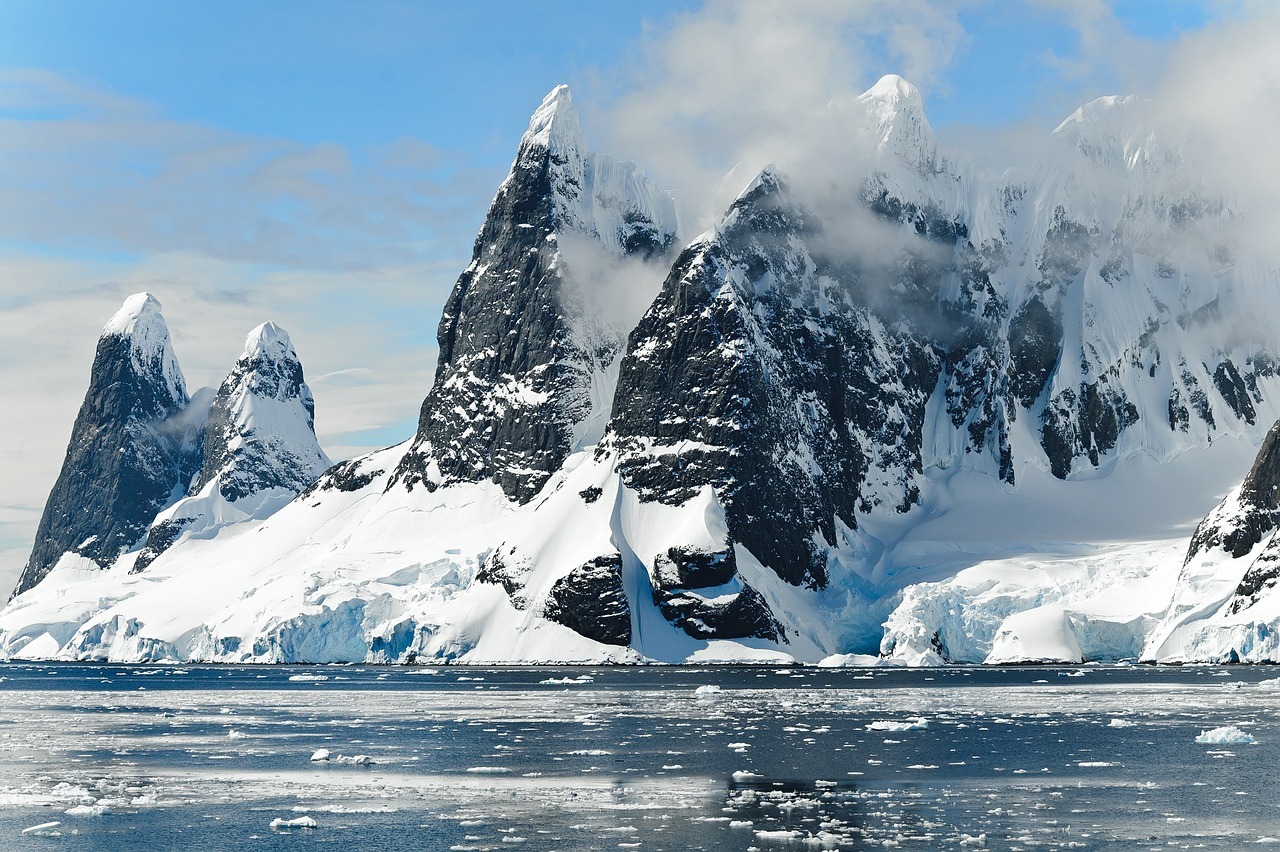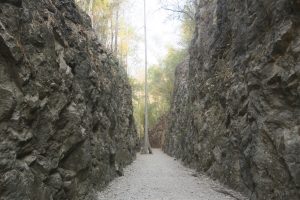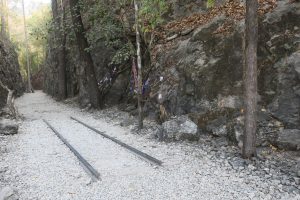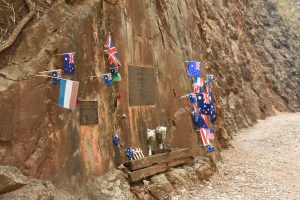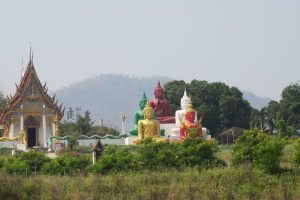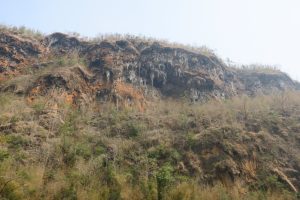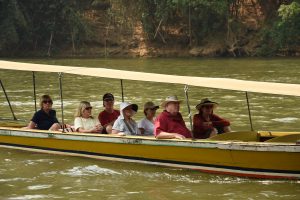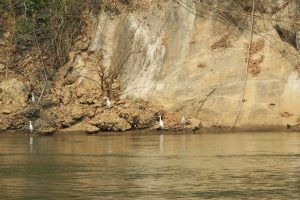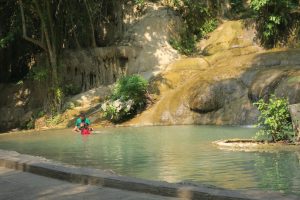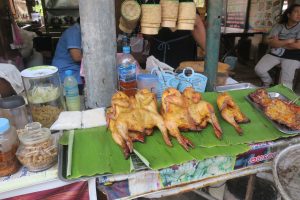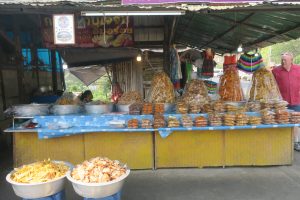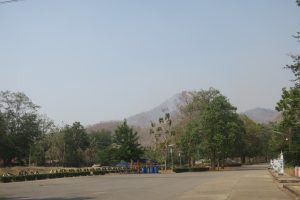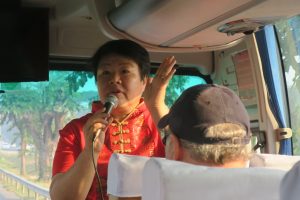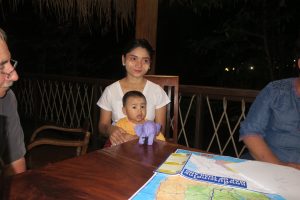This morning we walked along the Hellfire pass. There were two options, a short walk or a long walk. I still wasn’t feeling 100% so I opted for the short walk. Rick took the long walk. The Hellfire pass was one of the most difficult sections of railroad built by POWs during WWII. The prisoners had to cut through the rock before the track could be laid. It is called Hellfire Pass because the sight of emaciated prisoners labouring at night by torchlight was said to resemble a scene from Hell.
Here are some pictures.
After the walk we visited a museum which contained video interviews with POWs that had worked on the pass. It was very powerful. I don’t think we can come close to understanding the hell these people were put through.
After the museum we took a boat ride down the river. It was somewhat hazy and smoky. People in Thailand tend to do a lot of burning, in their fields, for their trash, and sometimes areas of forest. We saw this throughout country. Here are some pictures.
We had lunch at a restuarant near the train station. After lunch we went into town and took a walk up to a little waterfall.
We also walked along a row of little shops, many of which were selling various kinds of dried fruit. There are a lot of fruits and vegetables we don’t see in the US.
I haven’t written much about Lin. She is in her 50s and has been guiding OAT trips for 20 years. She is really marvelous. She guides this trip as well as another OAT trip that covers Bangkok, Laos, Cambodia, and Vietnam. Because of her years of experience guiding this other trip she knows a lot about the history of the region, not just Thailand, and does a great job explaining the interconnection of these countries. She’s very funny, loves to laugh, and is a joy to be around. She is one of the best guides we have ever had. We really lucked out!
We returned to the camp and had some free time. That evening Lin arranged for a stateless woman to speak to us.
Here’s some background about the stateless people from an organization called “The Thailand Project”
“Since 1962, the “world’s worst military dictatorship” has ruled over Burma (Myanmar). A huge number of human rights violations were inflicted by the junta upon ethnic minorities. Hundreds of thousands of families and individuals fled, crossing the border into Northern Thailand. There they are denied political refugee status, but allowed to live within tight “districts of constraint” with very few rights. They have no legal bond with any country and are therefore stateless. In Thailand, this means that they are denied the right to vote, travel, own property, work legally or have access to education and health care.
There is little hope among the stateless people in Thailand (estimated to be 3.5 million), as the few legal rights they have are not understood, and new laws intended to smooth the pathway to Thai citizenship are never truly implemented. Corruption and discrimination within Thai governmental district offices create further blockades. Racism and prejudice also run rampant within the admissions offices of schools and institutions of higher education. Enrollment forms demand Thai nationality IDs, even though laws have passed supposedly granting access to all.”
This lovely young woman, her husband, and her son have no citizenship anywhere. She is working to rectify that, but it is very difficult and the future for her family is uncertain. Her grandmother came to Thailand from Burma in 1958 and she and her dependents have been refugees ever since. Burma won’t take them back and Thailand doesn’t recognize them as citizens. Luckily the resort seems very open to helping these people by providing shelter and food for them in return for employment. She is a maid and her husband is a bartender. While their situation seems somewhat hopeless, she didn’t seem to feel that way. I had knitted elephants to give away to Thai children so I gave one to her 7 month son. She is wearing the white makeup on her face which is very common in Burma. Here is a picture of her and her son.
That evening we had dinner at the resort.
